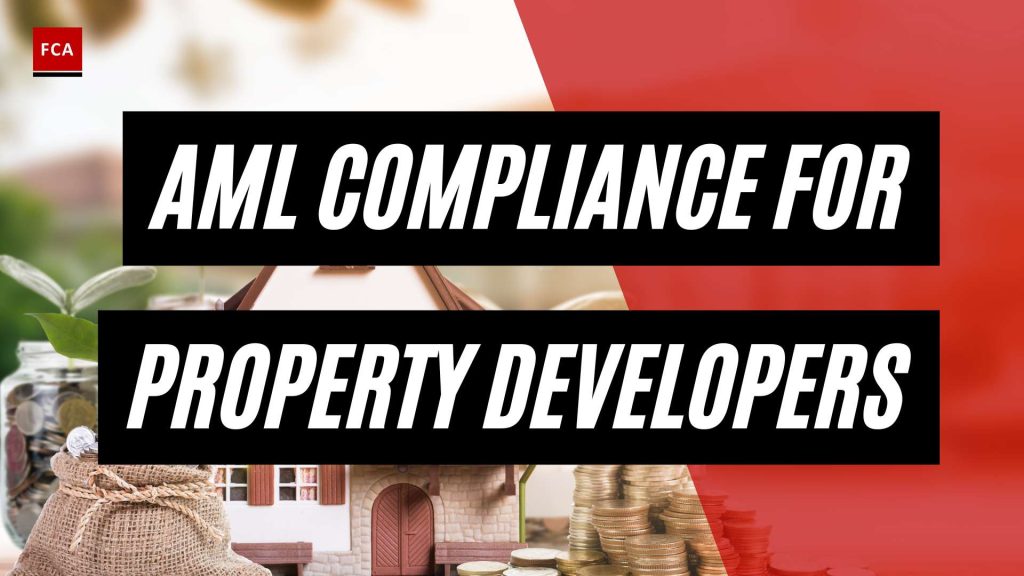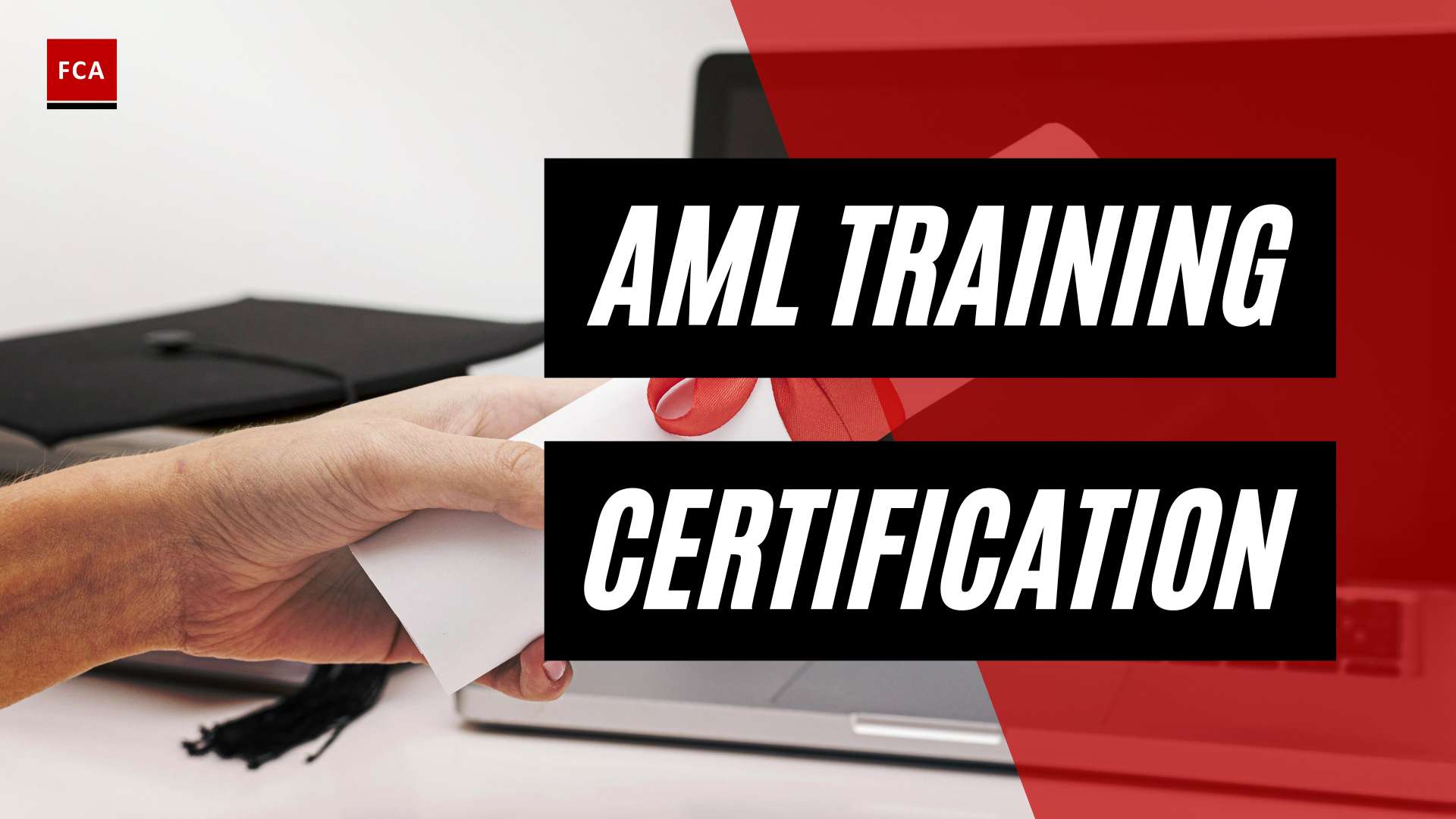AML Compliance for Property Developers
Property developers play a crucial role in the real estate industry and are subject to specific Anti-Money Laundering (AML) regulations to prevent illicit activities within the sector. Understanding these regulations and the consequences of non-compliance is essential for property developers to maintain integrity and mitigate risks.
Understanding AML Regulations in Real Estate
AML regulations in real estate are designed to detect and prevent money laundering and other financial crimes within the industry. Financial organizations that violate AML regulations can face civil and criminal penalties, ranging from fines to jail time, and may be sanctioned and barred from doing business (Unit21).
In the United States, the Bank Secrecy Act (BSA) of 1970 is the most significant law in fighting money laundering. It imposes compliance obligations on U.S. financial institutions, including property developers. Violations of the BSA can result in fines up to $500,000 and imprisonment up to 10 years for severe violations. The USA PATRIOT Act, enacted after the September 11 attacks, further strengthens AML regulations and requires banks and financial institutions to understand their compliance obligations. Violating the USA PATRIOT Act can result in fines of $1 million or double the value of the transaction, whichever is greater (Unit21).
Internationally, real estate money laundering is a significant issue. According to Global Financial Integrity (GFI), over $2.3 billion was laundered through U.S. real estate from 2015 to 2021 alone. This highlights the importance of robust AML regulations to combat illicit financial activities in the real estate sector.
Consequences of Non-Compliance in AML for Property Developers
The consequences of non-compliance with AML regulations can be severe for property developers. In addition to potential fines and imprisonment, non-compliant property developers may face reputational damage, loss of business opportunities, and increased scrutiny from regulatory authorities.
Violations of AML regulations can also lead to financial institutions refusing to work with non-compliant property developers, making it difficult to secure financing or establish business relationships. This can significantly impact the growth and sustainability of a property development business.
To avoid these consequences, property developers must prioritize AML compliance. Implementing robust compliance programs, conducting thorough due diligence on customers and business partners, and reporting suspicious transactions are crucial steps in meeting AML obligations.
By understanding AML regulations in real estate and the potential consequences of non-compliance, property developers can take proactive measures to ensure compliance, protect their business, and contribute to the overall integrity of the real estate industry.
Money Laundering in Real Estate
Money laundering through real estate is a significant global issue, with billions of dollars being laundered in the real estate sector. According to Global Financial Integrity (GFI), over $2.3 billion was laundered through US real estate from 2015 to 2021. Criminals exploit the real estate market to integrate illicit funds into the legitimate financial system. The prices of real estate can be easily manipulated, and individuals involved in the sector may be complicit in money laundering activities for financial gain (ComplyAdvantage).
Global Trends in Real Estate Money Laundering
Money laundering in real estate is not limited to a specific country or region. Several countries, including the US, the UK, Australia, Canada, and Germany, are recognized as money laundering hubs in the real estate sector. Hotspots in cities like London, Toronto, Vancouver, and New York have particularly high levels of real estate money laundering activity. Notable cases include a bank allegedly allowing $350 million to be invested in London property by the Vatican and funds used by drug traffickers to purchase property in Bulgaria.
Red Flags and Techniques Used in Real Estate Money Laundering
Detecting and preventing real estate money laundering requires an understanding of the red flags and techniques commonly employed by criminals. These include:
- Transactions involving high-risk countries: Money laundering in real estate often involves transactions with individuals or entities from high-risk jurisdictions. These countries may have weak anti-money laundering (AML) regulations or be known for their involvement in illicit financial activities.
- Sales between known criminals or politically exposed persons (PEPs): Criminals may engage in real estate transactions with other criminals or individuals who hold prominent public positions. These transactions can help conceal the illicit origins of funds.
- Over- or undervalued properties: Criminals may manipulate property prices to either overvalue or undervalue the properties involved in money laundering schemes. This can serve as a way to legitimize illicit funds or hide their true value.
- Use of cash for purchases: Criminals frequently use cash to purchase real estate, as it allows them to avoid leaving a traceable financial trail. Cash transactions make it difficult for law enforcement agencies to determine the true source of the funds.
- Complex ownership structures: Criminals employ intricate networks of shell companies and hidden property ownership to obscure the trail of funds used in real estate transactions. These complex ownership structures make it challenging for authorities to trace the illicit origins of the funds (ComplyAdvantage).
Understanding these red flags and techniques is essential for real estate developers and professionals to identify and report suspicious transactions. Implementing robust AML compliance measures and conducting thorough due diligence can help mitigate the risks associated with money laundering in the real estate sector.
The fight against money laundering in real estate requires collaboration between financial institutions, real estate professionals, and law enforcement agencies. Strengthening regulations, enhancing due diligence procedures, and promoting information sharing among stakeholders are crucial steps in combating real estate money laundering (Sanction Scanner). By prioritizing AML measures and remaining vigilant, the real estate industry can contribute to a safer and more transparent financial system.
AML Regulations and Guidelines
To combat money laundering in the real estate sector, property developers must adhere to various anti-money laundering (AML) regulations and guidelines. These regulations aim to prevent illicit funds from being funneled through real estate transactions, ensuring the integrity of the industry. Let’s explore three key frameworks: the Bank Secrecy Act (BSA) and USA PATRIOT Act, EU Anti-Money Laundering Directives (AMLDs), and the Financial Transactions and Reports Analysis Centre of Canada (FINTRAC).
The Bank Secrecy Act (BSA) and USA PATRIOT Act
The Bank Secrecy Act (BSA) of 1970 is a pivotal U.S. law in the fight against money laundering. It imposes compliance obligations on financial institutions, including banks and mortgage lenders, to implement effective AML programs. Violations of the BSA can result in severe penalties, including fines up to $500,000 and imprisonment up to 10 years for serious offenses (Unit21).
The USA PATRIOT Act, enacted in response to the September 11, 2001 attacks, further strengthens AML measures in the United States. It requires financial institutions to understand and fulfill their AML obligations. Non-compliance with the act can lead to significant fines, with penalties of up to $1 million or double the value of the transaction, whichever is greater.
EU Anti-Money Laundering Directives (AMLDs)
The European Union Anti-Money Laundering Directives (AMLDs) establish regulatory requirements that EU member states must adhere to in their fight against money laundering. These directives outline measures to prevent the financial system from being exploited for illicit activities. The most recent 6th directive increases criminal penalties for money laundering and expands the scope of legislation, aiming to further strengthen AML efforts across the EU.
Financial Transactions and Reports Analysis Centre of Canada (FINTRAC)
In Canada, the Financial Transactions and Reports Analysis Centre of Canada (FINTRAC) plays a crucial role in combatting money laundering and terrorist financing activities. FINTRAC operates under the Proceeds of Crime (Money Laundering) and Terrorist Financing Act, which aims to meet international obligations in fighting cross-border crime and terrorism.
Property developers in Canada, like other businesses susceptible to money laundering, must adhere to customer identification and record-keeping obligations outlined by FINTRAC. These obligations are crucial for creating transparency and reducing the risk of illicit funds entering the real estate sector. FINTRAC relies on financial transaction records provided by businesses under its jurisdiction to generate intelligence for law enforcement purposes. Additionally, FINTRAC has the authority to audit the compliance programs of these businesses to assess their design and operations, ensuring they meet regulatory obligations (MNP).
By complying with AML regulations and guidelines, property developers contribute to the overall effort of preventing money laundering in the real estate industry. Understanding and adhering to the BSA and USA PATRIOT Act in the United States, EU AML Directives in Europe, and FINTRAC requirements in Canada are essential steps in maintaining AML compliance and protecting the integrity of the real estate market.
AML Compliance Measures for Property Developers
To ensure compliance with anti-money laundering (AML) regulations, property developers must implement specific measures to mitigate the risk of money laundering and illicit financial activities. These measures include customer due diligence (CDD) requirements, reporting suspicious transactions, and establishing compliance programs with designated compliance officers.
Customer Due Diligence (CDD) Requirements
Customer due diligence is a critical component of AML compliance for property developers. It involves verifying the identity of customers and conducting risk assessments to understand their potential involvement in money laundering activities. Property developers must adhere to the CDD requirements outlined by regulatory authorities.
As part of CDD, property developers should:
- Collect and verify the customer’s identification information, such as name, address, and date of birth.
- Assess the customer’s risk profile based on factors such as the nature of the business relationship, the source of funds, and the customer’s background.
- Conduct ongoing monitoring of customer transactions to detect suspicious activities.
By implementing robust CDD measures, property developers can identify and mitigate the risk of money laundering within their operations. For more information on CDD procedures, refer to our article on real estate AML due diligence.
Reporting Suspicious Transactions
Property developers have a responsibility to report any suspicious transactions that may indicate potential money laundering or illicit activities. It is crucial to establish internal procedures to identify, document, and report suspicious transactions in accordance with regulatory requirements.
Key steps in reporting suspicious transactions include:
- Establishing clear guidelines for identifying red flags and suspicious activities related to real estate transactions. These may include unusual cash transactions, complex ownership structures, or transactions involving high-risk jurisdictions.
- Training employees to recognize and report suspicious transactions promptly.
- Designating a compliance officer responsible for overseeing the reporting process and ensuring compliance with reporting obligations.
Timely reporting of suspicious transactions helps authorities investigate and prevent money laundering activities within the real estate sector. For additional information on real estate AML monitoring and red flags, refer to our article on money laundering in real estate.
Compliance Programs and Designated Compliance Officers
Property developers should establish comprehensive compliance programs to effectively manage AML risks. These programs should cover all aspects of AML compliance, including policies, procedures, internal controls, and training.
Key elements of an effective compliance program include:
- Written policies and procedures outlining AML obligations specific to property developers.
- Regular employee training on AML laws, regulations, and internal policies.
- Ongoing monitoring and auditing of AML compliance to identify and address any weaknesses.
- Appointment of a designated compliance officer responsible for overseeing the implementation and effectiveness of the compliance program.
By implementing a robust compliance program and designating a compliance officer, property developers demonstrate their commitment to preventing money laundering and ensuring adherence to regulatory requirements. For guidance on technology solutions that can streamline AML compliance processes, refer to our article on AML compliance for mortgage lenders.
By adhering to customer due diligence requirements, reporting suspicious transactions, and establishing compliance programs, property developers can effectively mitigate the risk of money laundering and contribute to a stronger and more secure real estate industry.
Technology Solutions for AML Compliance
In the ever-evolving landscape of anti-money laundering (AML) compliance, technology plays a crucial role in helping property developers meet regulatory requirements and mitigate risks associated with money laundering activities. By leveraging innovative solutions, property developers can streamline their AML compliance processes and enhance their due diligence efforts. Here are some key technology solutions for AML compliance in the real estate industry:
Identity Verification and KYC Procedures
Verifying the identity of individuals involved in real estate transactions is a fundamental step in AML compliance. Property developers can employ technology-driven solutions to verify IDs, business registrations, proof of income, and other relevant documents across multiple countries and regions. These solutions utilize various methods such as NFC chips, phone carrier matches, and two-factor authentication (2FA) to ensure compliance with regulatory standards (Persona).
By automating the identity verification process, property developers can efficiently and accurately authenticate the identities of their customers, reducing the risk of fraudulent transactions and identity theft. This technology enables developers to establish trust and build a robust AML compliance framework throughout the real estate dealings.
Enhanced Due Diligence (EDD) Processes
Enhanced Due Diligence (EDD) procedures are vital in identifying and mitigating higher-risk transactions. Technology solutions can assist property developers in conducting thorough due diligence by providing access to global sanction, warning, and politically exposed person (PEP) lists. These solutions also offer negative news checks across millions of articles and enrich user profiles with social media handles, enabling property developers to automate and scale their KYC/AML programs (Persona).
By leveraging technology for EDD processes, property developers can efficiently screen individuals, analyze the source of funds and ultimate beneficial ownership, and monitor transactions for suspicious activities. This helps to ensure compliance with regulatory requirements and strengthen their AML risk assessment capabilities.
Due Diligence Software for Streamlining AML Compliance
To manage the complexities of AML compliance, property developers can utilize due diligence software. These platforms provide a centralized and organized environment for teams to manage and prioritize their enhanced due diligence checklist (DealRoom). With due diligence software, developers can efficiently fulfill due diligence tasks, communicate with team members, and generate comprehensive reports.
The software also enables developers to conduct manual review investigations effectively and trigger verification flows at different stages of the identity lifecycle. By automating compliance processes and streamlining identity operations, property developers can enhance trust, safety, and regulatory compliance in their real estate transactions.
By embracing technology solutions tailored for AML compliance, property developers can strengthen their compliance measures and mitigate the risks associated with money laundering activities. These solutions enable efficient identity verification, facilitate enhanced due diligence processes, and provide streamlined tools for managing AML compliance requirements. With technology on their side, property developers can navigate the complex landscape of AML regulations and contribute to a safer and more secure real estate industry.
AML Compliance in the Canadian Real Estate Market
In the Canadian real estate market, AML regulations play a vital role in preventing money laundering and ensuring the integrity of financial transactions. Real estate developers, brokers, and sales representatives have specific obligations and requirements to comply with to maintain AML compliance. Let’s explore the overview of AML regulations for real estate developers in Canada, their obligations and requirements, as well as the changes and updates to AML regulations.
Overview of AML Regulations for Real Estate Developers in Canada
Real estate developers in Canada are subject to the provisions of the Proceeds of Crime (Money Laundering) and Terrorist Financing Act (PCMLTFA) and its associated Regulations. As of June 1, 2021, FINTRAC has introduced guidance that mandates real estate developers to verify the identity of persons and entities involved in real estate transactions.
When selling new houses, new condominium units, new commercial or industrial buildings, or new multi-unit residential buildings to the public, real estate developers must verify the identity of clients. This requirement applies when developers act on their own behalf or on behalf of a subsidiary or affiliate. However, when developers hire real estate brokers or sales representatives as employees, the onus of identifying clients falls on the employer, not the employee.
Real estate brokers or sales representatives may act as agents or mandataries in the purchase or sale of real estate, and in such cases, they are responsible for verifying client identity. However, when real estate developers use brokers or sales representatives as their agents, they must meet the associated requirements, including identity verification.
Obligations and Requirements for Real Estate Brokers and Sales Representatives
Real estate brokers and sales representatives in Canada also have obligations under the PCMLTFA. As of June 1, 2021, brokers and sales representatives are required to verify the identity of clients when acting as an agent or mandatary in real estate transactions. This includes purchases or sales of real estate properties.
To comply with AML regulations, brokers and sales representatives must implement robust customer due diligence (CDD) procedures. CDD involves identifying and verifying the identity of clients, understanding the nature of the business relationship, and monitoring transactions on an ongoing basis. These measures are crucial in detecting and preventing money laundering and terrorist financing activities.
Changes and Updates to AML Regulations in Canada
Effective June 1, 2021, there have been significant changes and updates to AML regulations in Canada for real estate brokers, sales representatives, and developers. These changes include new guidance issued by FINTRAC regarding identity verification, screenings for politically exposed persons (PEPs) and heads of international organizations (HIOs), and recordkeeping requirements.
Under the new guidance, real estate brokers, sales representatives, and developers are now required to conduct screenings for PEPs, HIOs, and their family members and close associates. The determination of a person’s status as a foreign PEP or a foreign PEP family member remains indefinitely once established.
Furthermore, new recordkeeping requirements have been introduced, outlining specific obligations for recordkeeping related to beneficial ownership, ongoing monitoring, PEP/HIO screening, and more. Compliance with these recordkeeping requirements is essential to ensure transparency and accountability in real estate transactions.
It is essential for real estate developers, brokers, and sales representatives to stay updated on the changes and updates to AML regulations in Canada. Non-compliance with these regulations can result in severe penalties, including fines and imprisonment. By implementing robust AML measures and adhering to the regulatory requirements, real estate professionals can contribute to the overall efforts in combating money laundering in the Canadian real estate market.
In the next section, we will discuss the strategies and actions that can be taken to combat money laundering in real estate, including strengthening regulations, enhancing due diligence, and fostering cooperation between financial institutions, real estate professionals, and law enforcement agencies.
Combating Money Laundering in Real Estate
To effectively combat money laundering in the real estate sector, it is crucial to strengthen regulations and enhance due diligence measures. Cooperation between financial institutions, real estate professionals, and law enforcement agencies is also essential in detecting and preventing illicit activities. Additionally, implementing robust anti-money laundering (AML) measures is of utmost importance for real estate developers.
Strengthening Regulations and Enhancing Due Diligence
To address the challenges posed by money laundering in real estate, authorities and anti-money laundering bodies are focusing on strengthening regulations and enhancing due diligence requirements. Criminals frequently purchase real estate with cash and conceal their ownership through intricate networks of shell companies or hidden property ownership, making it challenging for law enforcement agencies to trace the illicit origins of the funds used in real estate transactions (Sanction Scanner).
To combat these tactics effectively, robust Know Your Customer (KYC) procedures, background checks on buyers and sellers, and increased transparency within the real estate sector are crucial. By implementing stringent due diligence measures, real estate professionals can better identify and mitigate the risks associated with money laundering in real estate. This includes conducting thorough AML risk assessments and adopting appropriate AML compliance programs.
Cooperation Between Financial Institutions, Real Estate Professionals, and Law Enforcement Agencies
Cooperation between financial institutions, real estate professionals, and law enforcement agencies is vital in the fight against money laundering in real estate. Criminals utilize various techniques in the real estate industry to launder money, such as property flipping, inflating property values, manipulating lease agreements, and engaging in mortgage fraud schemes, posing challenges to law enforcement agencies and undermining the integrity of the real estate market (Sanction Scanner).
By establishing effective channels of communication and information sharing, financial institutions, real estate professionals, and law enforcement agencies can collaborate to identify suspicious transactions, detect red flags, and investigate potential money laundering activities. This collaborative approach strengthens the overall effectiveness of AML efforts in the real estate sector.
Importance of Robust AML Measures for Real Estate Developers
Real estate developers play a crucial role in ensuring AML compliance in the industry. They must understand the risks associated with money laundering in real estate and prioritize the implementation of robust AML measures. Criminals employ various methods to launder money through real estate transactions, including utilizing third parties, credit and mortgages, property value manipulation, and structuring cash deposits.
Real estate developers should implement comprehensive customer due diligence (CDD) procedures to verify the identities of buyers, sellers, and other relevant parties involved in transactions. This includes conducting thorough background checks, assessing the source of funds, and identifying beneficial owners. By adhering to AML regulations and guidelines, such as the Bank Secrecy Act (BSA) and EU Anti-Money Laundering Directives (AMLDs), real estate developers can contribute to the overall integrity of the real estate market and protect themselves from legal and reputational risks.
In conclusion, combating money laundering in the real estate sector requires a multi-faceted approach. Strengthening regulations, enhancing due diligence, and promoting cooperation between financial institutions, real estate professionals, and law enforcement agencies are essential steps in mitigating the risks associated with money laundering. Real estate developers, in particular, must prioritize the implementation of robust AML measures to protect themselves and the integrity of the industry as a whole.








